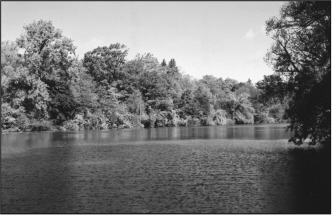
Canada is a country known for it’s bounty of natural wonders. Here are some facts about the forests and wildlife that is such an integral part of our identity. From our rolling forests to the creatures that have become synonymous with Canada — the loon, the beaver, and the mighty moose.

Forests continue to be an important part of Canada’s economy.
• After Russia, Canada has the largest continuous forested area on Earth. Covering nearly half the nation’s land mass and constituting 10 percent of the globe’s forest cover, Canada’s forests shelter 200,000 plant and animal species and provide one of every 17 Canadian jobs.
• The Douglas fir takes its name from David Douglas, a Scotsman who came to Canada in the early 1800s and introduced some 250 plants to Europe from North America, more than any other person.
Flora BITE!
On average, forest fires in Canada destroy twice the number of trees harvested by the country’s forest industry.
• The arbutus, Canada’s only evergreen hardwood, is found only on the west coast. Its distinctive features are red bark and glossy green, oval-shaped leaves.
• The Chapleau Game Preserve and Wildlife Sanctuary in Northern Ontario, which encompasses about 800,000 hectares (about 1.9 million acres), is the largest game preserve in the world. Creatures seen there include wolves, various birds of prey, otters, mink, fox, moose, and black bears.
 CANUCK CRITTERS
CANUCK CRITTERS
• In 1910, when beavers were beginning to overrun Ontario’s Algonquin Park, live trapping of these and other species became a lucrative project to meet the demand for zoo animals from all over North America.
• One of the claims to fame of Exeter, Ontario, is that it is home to a rare type of white squirrel. Though they are a genetic anomaly, these squirrels are not albinos.
• The beaver attained official status as an emblem of Canada when an “act to provide for the recognition of the beaver (castor canadensis) as a symbol of the sovereignty of Canada” received royal assent on March 24, 1975.
• There are no rats in Alberta thanks to a program created in the mid-1950s by the Alberta Department of Agriculture. The program, using traps and poison, was concentrated along the Saskatchewan border to keep rats from entering the province.
• Before the cardinal was named after its red-robed counterparts in the Roman Catholic Church, this popular backyard bird was called simply the “redbird” by early settlers to North America. Though cardinals are a common sight in Canadian backyards, the colourful birds are not native to this country. They moved here from the U.S. in the early 1900s.
• The bison, or North American buffalo, is the largest native land animal in Canada. A mature male can be 3.8 metres long, 1.8 metres tall at the shoulder, and weigh up to 720 kilograms.
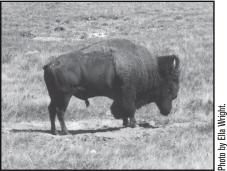
Canada’s largest native land mammal.
• Atlantic salmon are found in about three hundred rivers in Labrador, Quebec, and the Maritimes. They were also commonly found in Lake Ontario until the late 19th century.
• There are approximately 1,000 species of bees in Canada; some can even be found north of the Arctic Circle. Among the species that live here are bumblebees, honeybees, cuckoo, sweat, and mining bees.
• In 1950, there were one million Canada geese in North America. Today, the Canadian Wildlife service estimates there are five million, crediting the increased numbers to restrictions on hunting and the establishment of new colonies.
• Atlantic sturgeon, the largest fish in the St. Lawrence River, have been known to live for up to 60 years, reach 4.5 metres in length, and weigh up to 360 kilograms.
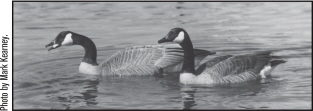
Canada geese thrive in the country that gave them their name.
 ONLY IN CANADA, YOU SAY? FIVE FOUR-LEGGED FRIENDS UNIQUE TO THIS COUNTRY
ONLY IN CANADA, YOU SAY? FIVE FOUR-LEGGED FRIENDS UNIQUE TO THIS COUNTRY
• The Tahltan Bear Dog: This small dog with white and black patches and a distinctive tail that ends in a wide brush is extinct in this country. It was kept by the Tahltan Indians of northwestern British Columbia for use mainly as hunters of bear and lynx and was once recorded by the Guinness Book of Records as the world’s rarest breed.
• Nova Scotia Duck Tolling Retriever: Foxlike in colour and intermediate in size, the tolling retriever’s roots trace back to Yarmouth County, Nova Scotia, where the breed was developed in the late 19th century. Several breeds and crosses were key to its evolution, including the Irish setter, which gave the breed its colour, and the yellow farm collie, the source of its bushy tail. Among the Toller’s most unique attributes is its ability to mimic the behaviour of a fox to draw waterfowl within the firing range of hunters.
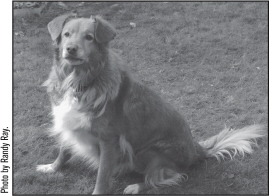
The duck tolling retriever.
• Canadian Eskimo Dog: Used mainly as a sled and backpack dog, this is the only breed of dog associated with the Aboriginal peoples of the Arctic. The history of this powerfully built canine dates back between 1,100 and 2,000 years when it was taken to the North American Arctic by the Thule Eskimos and gradually spread to Greenland. The Canadian Eskimo Dog is intermediate in speed and strength and in all seasons is a hunting companion with a nose keen enough to locate seal breathing holes in the ice and brave enough to hold large game at bay until the hunter comes in for the kill.
• Newfoundland: According to Newfoundland folklore, the breed’s progenitor was the Tibetan Mastiff, which had migrated across the Canadian north to Newfoundland and into Viking settlements before being crossed with the Viking bear dog in AD 1001. Known as the “gentle giant” of Canadian breeds, the heavy, long-coated dogs are excellent swimmers and are renowned as family companions and guardians with strong life-saving instincts.
• Labrador Retriever: The Labrador, whose ancestors were discovered in Newfoundland and Labrador by 18th-century colonists, is thought to have descended from dogs abandoned in the region by European fishermen. In the early 1800s, specimens were taken to Britain where they were crossed with other retrievers to become the most valued game dog in the country. Skilful hunters known for their intelligence and gentle, affectionate natures, the Labrador is one of the best gundogs in existence and is used extensively as a “seeing eye” dog. Most are black but some are yellow, chocolate, and cream.
 MORE CANADIAN CREATURES
MORE CANADIAN CREATURES
• The loon, featured on Canadian stamps and the dollar coin, is related to the penguin. They have large webbed feet that allow them to swim at great speeds but on land, loons are awkward and can barely stand upright.
• The moose is not native to Newfoundland but was introduced there on two different occasions. In 1878, a bull and a cow were brought from Nova Scotia and released at Gander Bay and in 1904 two bulls and two cows from New Brunswick were released near Howley. Today there are approximately 120,000 moose on the island of Newfoundland.
• Jumbo, the famous circus elephant of the 19th century, was killed in St. Thomas, Ontario, after colliding with a locomotive. Jumbo was being led along the tracks on September 15, 1885, when an unscheduled train appeared out of the fog and collided with him. One hundred years after his death, a life-size statue of the elephant was erected in St. Thomas.
• Since the 1980s, a wide array of unusual creatures has been found on Canadian farms, including elks, emus, ostriches, wild boars, and llamas. In fact, farmers across Canada are tending more than 100 species of exotic creatures, mainly because of changes in consumer preferences.
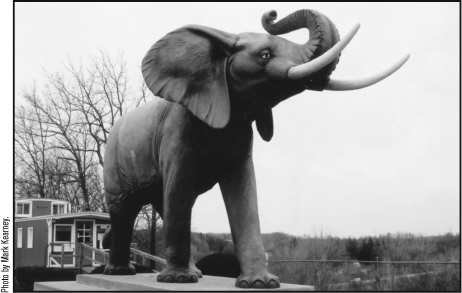
Jumbo’s statue greets visitors in St. Thomas, Ontario, where the famous elephant was killed.
• Slippery, a famous sea lion from London, Ontario, made international headlines in 1958 by escaping from the city’s Storybook Gardens and swimming down the Thames River. He was later captured in Lake Erie near Sandusky, Ohio, and brought home. His exploits were later turned into a documentary and stage play.
• The waters of the Pacific Ocean off the coast of British Columbia are home to the world’s largest species of octopus, octopus dofleini. This eight-armed creature can grow up to nine metres wide and weigh more than 100 kilograms.
• The peregrine falcon, which makes its home in Canada’s Yukon Territory, is among the fastest creatures on Earth, capable of flying 200 kilometres per hour.
• Nova Scotia was the first province to choose an official bird. It is the osprey, a fish-eating species with long, sharp talons. There are some 250 active osprey nests in the province.
• Canada fed 3.5 million cattle in 2007. Producing 3.5 billion pounds of beef in 2007, the cattle industry remains the largest single source of farm receipts in Canada.